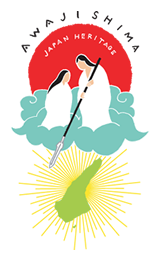28
Awaji Ningyo Joruri (Awaji Puppet Narrative)
Awaji Ningyo Joruri (Awaji Puppet Narrative)
The Awaji Ningyo Joruri (Awaji Puppet Narrative, National Important Intangible Folk Cultural Property), said to be the origin of the Ebisu-mai (Dance of the Fishing and Shipping Kami), also linked to the Kuniumi Story , is the performing art representative of Awaji Island, and is performed with 3-puppeteer puppets, gidayu (chanter), and thick-neck shamisen. In the golden era of ningyo joruri, in the mid-Edo period, there were at least 40 troupes, and its appeal reached people all over Japan. Minamiawaji City’s Awaji Puppet Theatre offers a window into the essence of Edo period culture.
| Designation | National Important Intangible Folk Cultural Property |
|---|---|
| Address | Awaji Puppet Theatre Company, 1528-1 Fukurako, Minamiawaji City, Hyogo Prefecture 656-0501 |
| Website | http://awajiningyoza.com/ |
| Phone | +81-799-52-0260 |
| Performance times | 10:00, 11:10, 13:30, 15:00 |
| Designation | National Important Intangible Folk Cultural Property |
|---|---|
| Address | Awaji Ningyo Joruri Museum, 880 Ichisanjo, Minamiawaji City, Hyogo Prefecture 656-0475 |
| Website | http://www.city.minamiawaji.hyogo.jp/soshiki/jyoururi/ningyo.html |
| Phone | +81-799-43-5037 |
| Open | 10:00 - 17:00 (Free entry) |
| Closed | Mon. (Open if Mon. is a public holiday), Day after a public holiday, Year end & New Year |



 English
English












